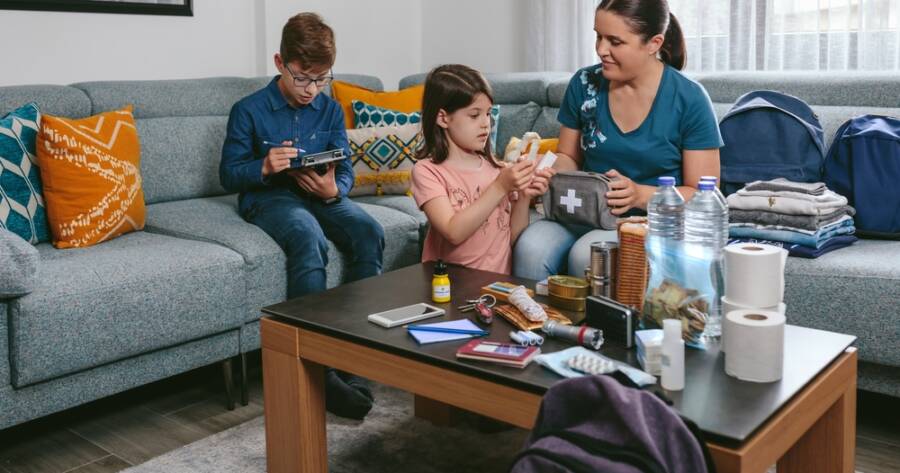Teaching kids how to prepare for emergencies empowers them with confidence, responsibility, and essential life skills. Building their own emergency kit not only equips them with practical tools but also helps them understand the importance of being ready for unexpected situations. From natural disasters to everyday mishaps, giving children the knowledge to assemble and manage their own kit ensures they’re prepared, calm, and capable when it matters most.
Explain Why Emergency Kits Matter
Start by helping kids understand why emergency kits are important. Explain that emergencies, like power outages, storms, or accidents, can happen anytime, and being prepared helps keep everyone safe and calm. Use age-appropriate language to ensure they grasp the seriousness without creating unnecessary fear.
Relating it to real-life examples, like a recent storm or news story, can make it more relatable. When kids see how having supplies on hand can make tough situations easier, they’ll be more motivated to participate in building their own kit.
Make a Kid-Friendly Checklist Together
Create a simple, easy-to-follow checklist with your child outlining essential items. Include basics like water, non-perishable snacks, a flashlight, batteries, a small first-aid kit, and extra clothes. Involve them in brainstorming what else they might need, like comfort items, favorite snacks, or a family photo.
Giving kids a say in the process makes them feel responsible and engaged. They’ll also better remember what’s in their kit and how each item can help in an emergency.
Teach Basic First Aid Skills
Including basic first aid supplies is a great opportunity to teach kids how to use them. Show them how to clean minor cuts, apply bandages, and safely use antiseptic wipes. Make it interactive by letting them practice on a toy or even themselves under supervision.
Knowing simple first aid builds confidence and ensures they won’t panic if faced with small injuries. Reinforce that the kit is for helping, and it’s okay to ask an adult for assistance if needed.
Personalize Their Emergency Kit
Encourage your child to personalize their kit with items that provide comfort or entertainment. This might include a favorite book, a small stuffed animal, a deck of cards, or a handwritten note from family. Familiar items can ease anxiety during stressful situations.
Letting them choose these extras ensures the kit feels uniquely theirs. It also helps balance practicality with emotional reassurance, making the kit something positive rather than scary.
Practice Using the Kit
Once the kit is complete, walk through how to use it. Practice scenarios like what to do during a power outage or where to find the kit during a storm. Keep the practice light and encouraging, focusing on preparedness rather than fear.
Revisit the kit regularly to check expiration dates and refresh supplies. This reinforces the habit of being ready and allows your child to feel involved and capable.
Emphasize Communication and Safety Plans
Having a kit is only part of being prepared—kids should also understand your family’s safety plan. Teach them key information, like emergency contact numbers, meeting points, and how to call for help. Rehearsing these steps together ensures they know what to do beyond using the kit.
Reassure them that preparation is a family effort and they’re never alone in facing emergencies. A well-rounded plan builds both confidence and peace of mind.
Prepared and Empowered
Teaching kids how to build their own emergency kit does more than stock supplies—it builds responsibility, resilience, and a sense of control. With the right tools and knowledge, they’ll feel empowered to face unexpected situations calmly and confidently.

